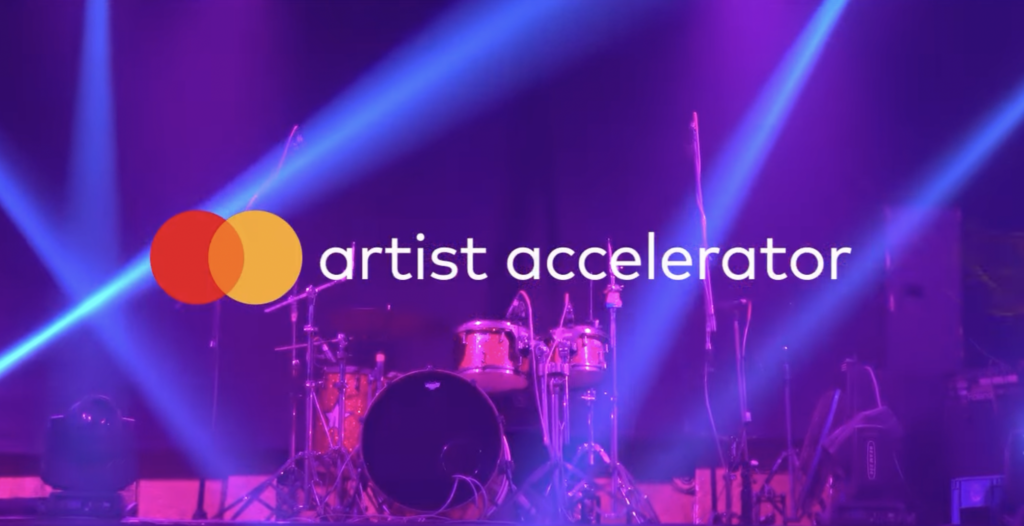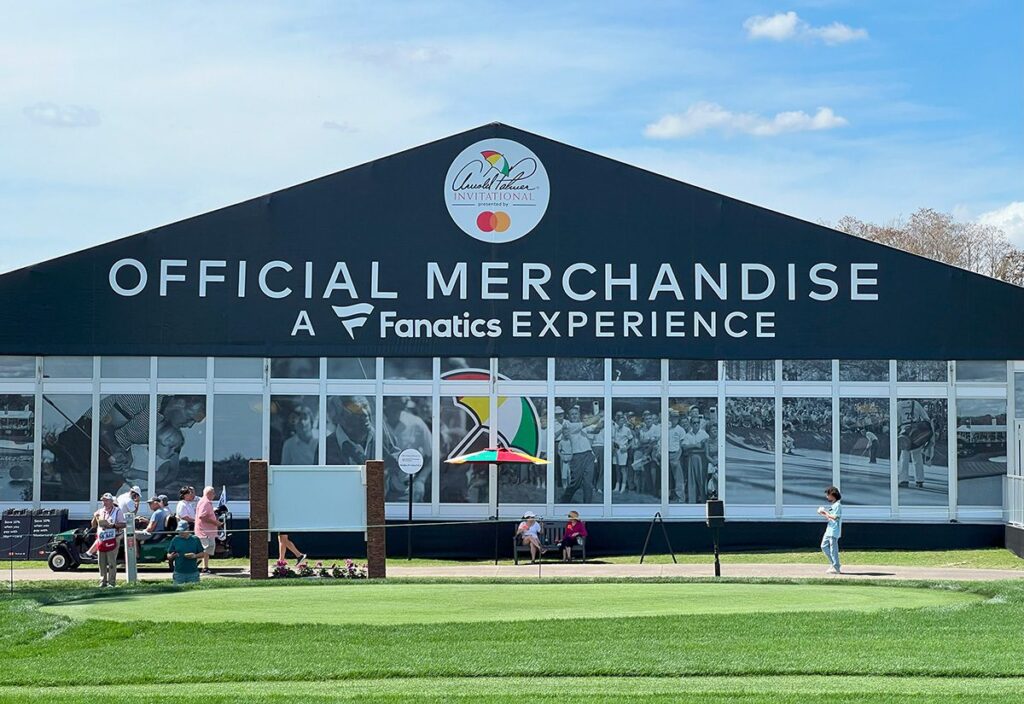Mastercard’s EVP of Brand Strategy and Innovation on Artist Accelerator Program 2.0

Mastercard will launch the second iteration of its Artist Accelerator program next month, which equips emerging artists with tools to thrive in the digital economy, including merchandizing, marketing, monetization and promotional skills. New to the program this year is a partnership with live touring series and music discovery platform OnesToWatch, which will add live performances, mentorship, virtual audience engagement and education bootcamps in emerging tech—including Web3 and generative AI tools—to the experience.
“Experience” is the key word here, according to Cheryl Guerin, Mastercard’s EVP of Brand Strategy and Innovation. “One of the things we’re not doing is traditional marketing… We consider ourselves an experiential marketer,” she said. “And that means we’re going to find a way to connect to what matters to people. It’s not about us talking at people, it’s about us enabling experiences. That creates affection for our brand, and loyalty to our cards.”
Here’s our conversation with Guerin about the strategic marketing goals for the accelerator program’s second season and how it will engage consumers during the process. Plus, she shares an update on Mastercard’s sonic branding strategy, new channels the company is experimenting with, and her approach to differentiating from competitors.
Chief Marketer: What’s different about this year’s program?

Cheryl Guerin, Mastercard’s EVP of Brand Strategy and Innovation: Some things are the same, in that we’re focused on bringing fans closer to what they love—the music passion—and then helping emerging artists have a platform to learn and launch their careers. The biggest difference this year is we’re bringing it live. We’re partnering with OnesToWatch, a platform that has launched tremendous careers for the likes of Dua Lipa and others. Now the artists going through the accelerator program are getting the chance to go on tour with OnesToWatch.
CM: What consumers insights or trends informed this?
CG: Live music is taking off. It had a huge year last year, and it’s set to grow even more in 2024. We wanted to make sure we moved them from the studio to the stage, and give them that opportunity to be part of this live music scene.
We’re seeing a surge in experiences. We came out of Covid and everybody wanted to move live again. And 2023 saw its biggest year ever for live music. In 2024, that stage is set, and it’s likely going to grow as well. So it’s based upon those trends.
We wanted to move in this direction also for the emerging artists. You’re putting them through a curriculum of education. You’re going through boot camps and giving them tech and tools to accelerate their music, and then you’re giving them a stage to actually perform on. Last year we had a Billboard virtual concert livestream. People got to create their music and perform their songs, with a virtual audience.
CM: What are the strategic marketing goals of the program?
CG: This goes back to our experiential marketing strategy… One of the things we’re not doing is traditional marketing. We consider ourselves an experiential marketer. And that means we’re going to find a way to connect to what matters to people. It’s not about us talking at people, it’s about us enabling experiences. And that creates affection for our brand, and loyalty to our cards. As part of that, we’re bringing people closer to their passions.
We’re also inspiring purpose. Sometimes we’re fusing passion and purpose. And in this case, it’s the passion of music. The purpose is giving emerging artists and those who may not typically have a chance to be seen a way to inspire and enable their passion of creating music. We get to do both in this case.
CM: And from a business perspective?
CG: From a marketing perspective, certainly [there are] the brand goals, but then we’re also looking at how we’re creating and enabling a community that we’re engaging with on an ongoing basis. Five artists go through the program, but over a hundred thousand people got the Music Pass last year, which gave them [virtual] access to watch and learn as the artists went through their journeys. It gave them access to tech and tools, like our genAI music studio, where they can create their own music and songs. And we’ll be doing the same this year.
It keeps that experiential engagement going with the artists and with our community that we’re creating. When we’re doing experiential marketing, you’re earning media as well. We want people talking about the program and talking about what they’re learning, participating and engaging in.
CM: Talk about the genAI music studio. How are you leveling up the tech part?
CG: We [think] about the humanity when it comes to genAI. Are we taking away people’s creativity? We learned from our genAI music studio last year that it’s an enhancer and enabler—and doesn’t take away from the creativity. It actually accelerates the creation of the music. It’s a nice story for us when we talk about the pitfalls and concerns people have about [AI] eliminating creativity. And with the Music Pass, the genAI studio will allow you to personalize your sound and connect that to it.
CM: Switching gears a bit to sonic branding. Mastercard is a big player in this area. What’s the brand’s latest direction there?
CG: This is in anything and everything we do. It’s part of our branding as much as a visual logo is; it’s there at all times. You see and hear our sonic brand in conjunction with the visual. It’s the same with point of sale, [which is] expanded to millions of locations around the world. At the end of your transaction, when you’re getting out of a taxi cab in New York City, or if you’re pairing your phone to your payment, you hear the sound that goes with it—a reinforcement of trust that the payment went through. It gives people peace of mind. They also trust the merchant more when they are hearing that sonic brand, our research has shown.
But with any piece of communication that we do, you’ll always hear it. But it’s not just a signature at the end. It’s the melodies built into any music track that we have in all of our advertising, for instance. In the case of the songs that the artists are creating, each of them—with the AI music studio—created their songs and infused our sonic branding into them.
CM: More and more companies, particularly in financial services, are adding this kind of sound to reassure customers that transaction has gone through. Apple Pay has a very loud one, for instance.
CG: This is true as well. There are more and more channels where your brand might not be seen. In the audio evolution and revolution that’s happening, whether that’s making a purchase through a smart speaker, through your car or wherever that might be, the brand may not have a visual cue. So, particularly when you’re making a transaction that might not be seen, it’s even more important for a brand like ours to have that reinforcement. And to recognize that your brand may be seen, but if it can’t be, it should be heard. Ideally, they’re all in combination, working in harmony.
CM: Are there any new channels that you’re experimenting with?
CG: This is one of them. You didn’t hear me say the “NFT” [Music Pass] this whole time. That being said, this is a Web3 platform. Mastercard Music Pass is technically an NFT. And this builds on the ability to add to the experiences that we already do. It gives people special access, or a token-gated experience. It’s not about the technology. It’s just about what it enables, which adds to our core strategy in the first place.

CM: Do you see usage of NFTs declining?
CG: Even last year, when the hype cycle was there around NFTs, we called it the “Mastercard Music Pass.” So even then, we tried to focus it around the human experience. When I look at the stats, people are still engaging with NFTs in a big way. The hype cycle has [slowed] down, but it’s about utility for brands, and creating loyalty and community.
We also have a Web3 platform called Pass to Priceless, and we just enabled another experience at the Arnold Palmer Invitational last week. We had a commemorative Arnold Palmer Invitational hat with embedded technology that enabled you to pull up a site to help you navigate the course and show you where you could have priceless experiences. For a Mastercard cardholder, all those experiences—where you took pictures with golfers, photos with your friends—they all got captured and now sit in that hat. It’s on the blockchain, so you can always access those memories.
CM: Since it’s of the moment: any other genAI initiatives in the works?
CG: In addition to this program, we announced at CES that our small business AI capability is coming soon. It’s a conversational chatbot where small businesses can interact, ask questions, get simple answers (or even complex answers) related to tax information, how to start a business, and where to go to for certain needs when managing your small business.




























